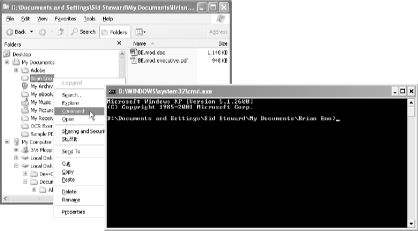Hack 79 Tool Up with pdftk
| < Day Day Up > |
| Take control of your PDF with pdftk . If PDF is electronic paper, pdftk is an electronic staple-remover, hole punch, binder, secret-decoder ring, and X-ray glasses . pdftk is a simple, free tool for doing everyday things with PDF documents. It can:
The pdftk web site (http://www.AccessPDF.com/pdftk/) has links to software downloads and instructions for installation and usage. pdftk currently runs on Windows , Linux, Solaris, FreeBSD, and Mac OS X. Some users can download precompiled binaries, while others must download the source code and build pdftk using gcc, gcj, and libgcj (as described on the web site). pdftk is free software. On Windows, download pdftk_1.0.exe.zip to a convenient directory. Unzip with your favorite archiving tool, and move the resulting pdftk.exe program to a directory in your PATH , such as C:\windows\system32\ or C:\winnt\system32\ . Test it by opening a command-line DOS prompt and typing pdftk --help . It should respond with pdftk version information and usage instructions.
6.7.1 Handy Command Line for WindowsCommand prompts aren't well suited for quickly navigating large, complex filesystems. Let's configure the Windows File Explorer to open a command prompt in the working directory we select. This will make it easier to use pdftk in a specific directory.
Windows XP and Windows 2000:
Windows 98:
Test your configuration by right-clicking a folder in the File Explorer. The context menu should list your new Command action, as shown in Figure 6-7. Choose this action and a command prompt will appear with its working directory set to the folder you selected. Ol ! Figure 6-7. Opening a command prompt right where you need it
|
| < Day Day Up > |
EAN: 2147483647
Pages: 158
- Chapter IX Extrinsic Plus Intrinsic Human Factors Influencing the Web Usage
- Chapter X Converting Browsers to Buyers: Key Considerations in Designing Business-to-Consumer Web Sites
- Chapter XII Web Design and E-Commerce
- Chapter XV Customer Trust in Online Commerce
- Chapter XVII Internet Markets and E-Loyalty


 Folder Options . . . and click the File Types tab. Select the Folder file type and click the Advanced button.
Folder Options . . . and click the File Types tab. Select the Folder file type and click the Advanced button.